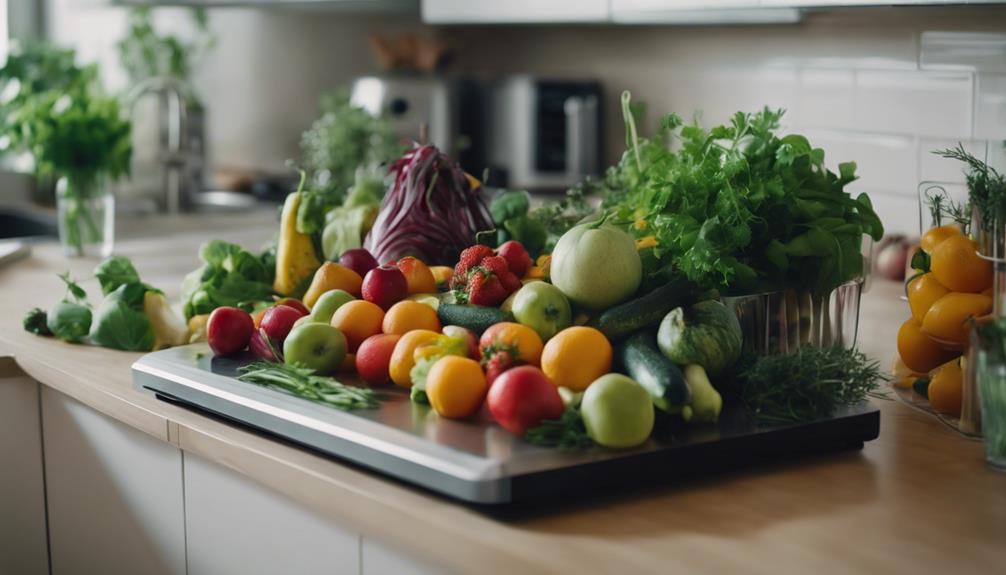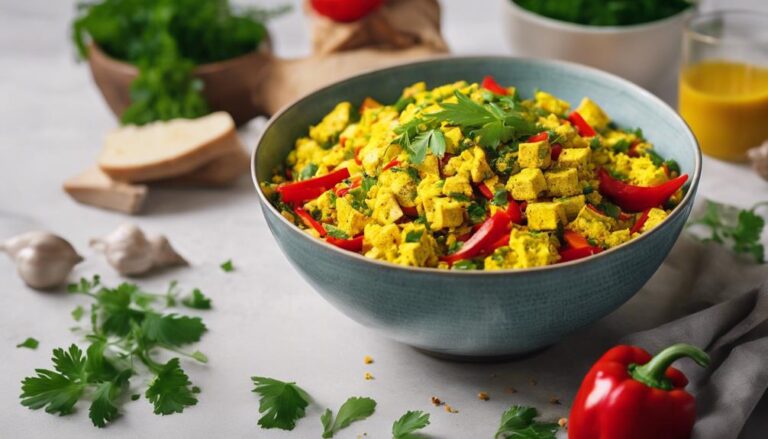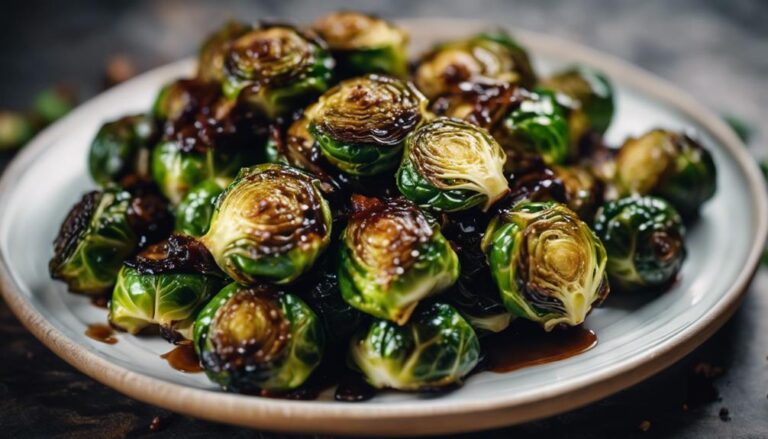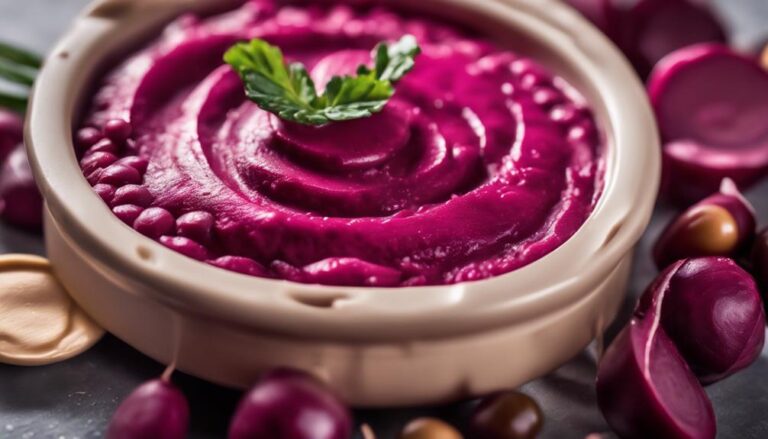Exploring the Plant-Based Revolution: An Introduction to Vegan Sous Vide Cooking
Begin a culinary journey into vegan sous vide cooking, revolutionizing plant-based gastronomy. Shifting to plant-based diets positively impacts health and the environment. Sous vide cooking enhances soy protein texture, creating meat-like consistency. Social media influencers advocate for plant-based benefits, fostering a sense of community. Challenges lie in achieving meat-like texture and precise temperature control. Future innovations elevate vegan options, enhancing flavors and sustainability. New ingredients like aquafaba bring complexity to plant-based dishes. Sustainable sourcing in vegan sous vide cooking conserves resources and supports a healthier planet. Explore the endless possibilities of vegan sous vide for a greener, tastier future.
What You Will Learn Here
- Sous-vide enhances vegan cooking by replicating meat-like textures and flavors.
- Innovative techniques like hydrocolloids improve structure and mouthfeel in vegan sous-vide.
- Vegan demand drives culinary transformation towards sustainability and health-conscious choices.
- Plant-based sous-vide cooking promotes culinary creativity, diverse flavors, and textures.
- Sustainability is promoted through vegan sous-vide by reducing water and land resources compared to animal products.
Environmental and Ethical Implications
The environmental and ethical implications of transitioning to a plant-based diet are profound and far-reaching, impacting not only individual health but also the well-being of the planet as a whole. By choosing plant-based options over animal products, you're actively contributing to a more sustainable future.
Plant-based eating greatly reduces greenhouse gas emissions, making it an essential step in combating climate change. Additionally, embracing a plant-based diet helps address ethical concerns related to animal welfare and exploitation.
Your decision to opt for plant-based foods promotes sustainability by reducing deforestation and water scarcity, essential factors in preserving the environment. Not only does this shift conserve water resources, but it also plays a crucial role in creating a more compassionate world.
Your choice to embrace plant-based lifestyles aligns with ethical principles and contributes to a more environmentally conscious society. It's a powerful step towards fostering a healthier planet for future generations.
Health Benefits of Plant-Based Diets
Embracing plant-based diets aligns with ethical principles and offers a myriad of health benefits that contribute to overall well-being and disease prevention. Plant-based diets have been associated with a lower risk of chronic diseases such as heart disease and diabetes due to their rich nutritional advantages. These diets are abundant in essential nutrients, vitamins, and antioxidants, promoting holistic wellness and balanced meals.
The high fiber content in plant-based diets plays an important role in blood sugar regulation and immune support, enhancing overall health. Culinary creativity in plant-based cooking emphasizes wellness promotion, encouraging the incorporation of a variety of plant-based foods to guarantee sufficient protein from legumes and essential vitamins from leafy greens. By focusing on plant-based culinary innovation, individuals can enjoy a diverse range of nutrient-dense foods that support their health and well-being.
Culinary Evolution: Innovative Techniques
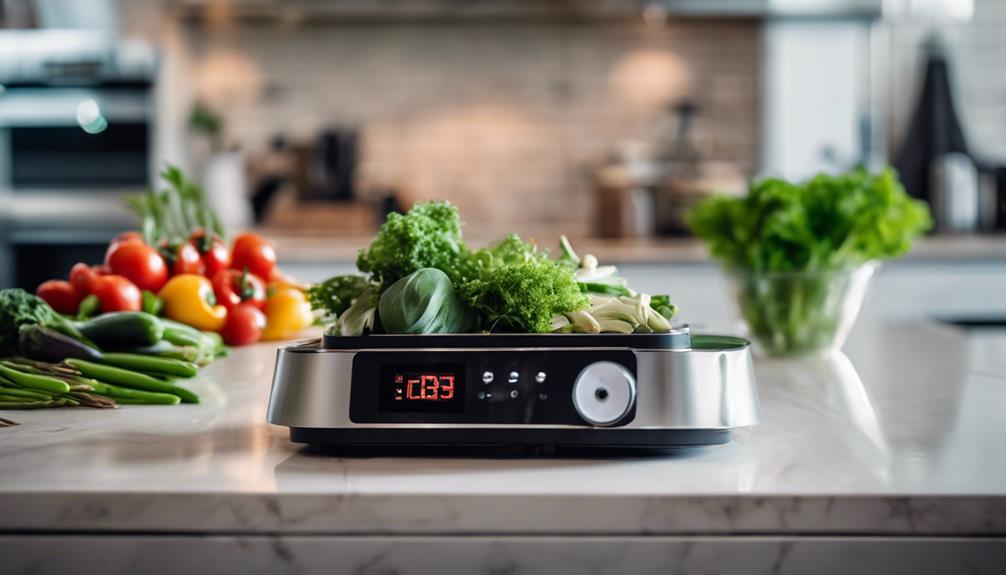
You can explore innovative culinary techniques through sous-vide cooking, which offers precise control over transforming low-moisture texturized soy protein (TSP) into meat-like textures.
Sous-vide processing not only enhances TSP microstructure but also maintains a high moisture content, resulting in a darkened color and improved meat analogues.
Sous Vide Benefits
Utilizing sous-vide cooking techniques revolutionizes the texture and structure of low-moisture texturized soy protein, elevating its culinary potential immensely.
Through this method, improved texture, moisture retention, and flavor enhancement are achieved, making it more akin to meat. The precise control offered by sous-vide transforms the microstructure of texturized soy protein, increasing its moisture content significantly.
This process also leads to an increase in β-sheet and α-helix structures, mimicking the textures found in meat. The overall quality of texturized soy protein is enhanced through sous-vide cooking, as it reduces textural properties while maintaining a meat-like consistency.
Creative Culinary Methods
Exploring innovative culinary techniques, chefs are delving into the domain of sous-vide processing to revolutionize the transformation of low-moisture texturized soy protein (TSP) into high-moisture meat analogues. Through this method, flavor infusion becomes more precise, allowing for a deep penetration of seasonings into the protein matrix.
Texture enhancement is a key aspect of sous-vide treatment, as it enables TSP to mimic the mouthfeel of traditional meat products. Chefs can showcase their culinary creativity by experimenting with different herbs, spices, and marinades to elevate the taste profile of the final dish.
This innovative approach not only improves the overall sensory experience but also broadens the possibilities for plant-based cooking, catering to a diverse range of palates.
Social Media Influence on Plant-Based Lifestyles
The pervasive influence of social media platforms such as Instagram, YouTube, and TikTok plays a pivotal role in showcasing and promoting vibrant and creative plant-based meals, thereby sparking interest in plant-based diets among a diverse audience. Influencer advocacy on these platforms has been instrumental in highlighting the health and environmental benefits of plant-based eating, encouraging individuals to ponder adopting a more plant-focused lifestyle.
Personal stories shared by influencers, celebrities, and food bloggers make plant-based living more relatable and accessible to a wider audience, contributing to the growing popularity of plant-based diets. Fitness influencers further contribute to this trend by promoting the health advantages associated with plant-based diets, inspiring their followers to explore plant-based options.
Social media serves as a hub for sharing plant-based recipes, tips, and experiences, fostering a sense of community among individuals embracing plant-based living. This digital landscape not only promotes health and wellness but also reflects evolving lifestyle trends towards more sustainable and compassionate choices.
Challenges and Misconceptions

Despite the numerous benefits of using sous-vide cooking techniques to transform texturized soy protein, various challenges and misconceptions still surround its application in vegan cuisine. One common misconception is that vegan sous-vide cooking cannot achieve the desired meat-like texture. However, research shows that sous-vide can effectively modify the texture of soy protein to mimic meat. Cooking challenges may arise due to the need for precise temperature control and longer cooking times associated with sous-vide methods. Additionally, some may believe that texture modifications with sous-vide are limited, but in reality, this technique offers a wide range of possibilities to create varied textures in plant-based meat analogues.
| Misconceptions | Challenges |
|---|---|
| Limited texture options | Temperature control |
| Longer cooking times |
Hydrocolloid Usage in Plant-Based Cooking
Hydrocolloids, such as agar agar and carrageenan, play a pivotal role in enhancing the texture and structure of plant-based dishes, particularly in vegan cuisine. These hydrocolloids are instrumental in vegan cooking as they act as binding agents for plant-based proteins, mimicking the textures found in traditional meat dishes.
Agar agar, sourced from seaweed, is a popular gelatin substitute utilized in plant-based cuisine to create cohesive and gel-like textures without animal-derived ingredients. On the other hand, carrageenan, extracted from red seaweed, serves as a stabilizer and thickening agent, contributing to the desired consistency in vegan recipes.
Impact on the Food Industry
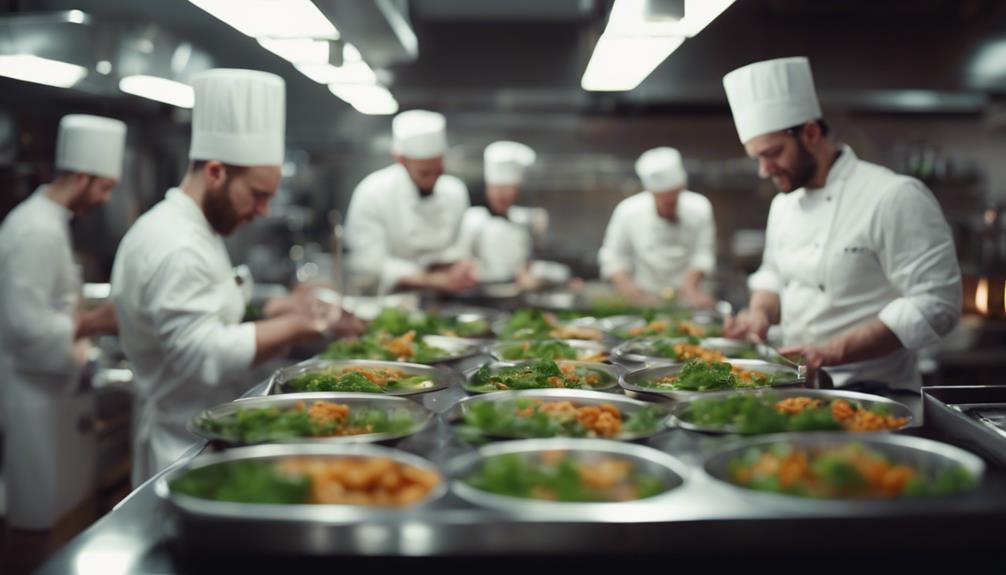
As you explore the impact of vegan sous vide cooking on the food industry, you'll notice a significant shift in industry trends towards plant-based alternatives. Demand for vegan options is steadily rising, prompting food businesses to adapt to this growing market segment.
Sous vide techniques offer a precise way to manipulate plant-based ingredients, catering to the evolving preferences of consumers seeking meat analogues.
Industry Trends Shift
The shift in industry trends within the food sector is greatly impacted by the innovative advancements in plant-based sous-vide cooking techniques. Vegan protein sources are being transformed through precise culinary techniques like sous-vide processing, offering a new dimension to texture enhancement.
This method allows for meticulous control over the microstructure of proteins such as textured soy protein (TSP), resulting in a more meat-like consistency. Research indicates that sous-vide treatment leads to an increase in β-sheet and α-helix structures in TSP, closely resembling the protein structure of meat.
Vegan Demand Rises
The growing clamor for vegan options has ignited a transformative wave throughout the food industry, reshaping menus and culinary practices to meet the escalating demand for plant-based dishes. Vegan recipes, meat substitutes, and plant-based innovation are at the forefront of this revolution, driving chefs to craft innovative dishes that cater to the increasing vegan clientele. The surge in plant-based food options showcases a shift towards sustainability and health-conscious choices, appealing to a diverse range of consumers. Chefs are experimenting with techniques like fermentation and molecular gastronomy to create plant-based culinary delights that rival traditional animal-based dishes in taste and complexity. Plant-based gastronomy celebrates a myriad of flavors and textures, offering a revitalizing alternative in the culinary landscape.
| Vegan Recipes | Meat Substitutes | Plant-Based Innovation |
|---|---|---|
| Diverse and flavorful plant-based dishes | Innovative alternatives to meat | Utilizing new techniques in cooking |
| Celebrating sustainability and health | Mimicking meat textures and flavors | Pushing boundaries in culinary creativity |
| Adapting traditional recipes into vegan versions | Providing protein-rich options | Incorporating global flavors in plant-based dishes |
| Catering to a growing vegan customer base | Enhancing taste through seasoning | Embracing environmentally friendly practices |
| Showcasing creativity in plant-based cooking | Offering versatile cooking options | Encouraging experimentation with new ingredients |
Future of Plant-Based Innovation
Innovative plant-based advancements in sous-vide cooking are poised to revolutionize the culinary landscape by elevating texturized soy protein (TSP) into delectable meat analogues with enhanced texture and moisture content. This transformation opens up a world of possibilities for flavor experimentation and ingredient versatility, allowing for the creation of a wide array of plant-based dishes that cater to diverse tastes and preferences.
Texture innovation in sous-vide processing not only enhances the mouthfeel of TSP but also sparks culinary creativity by replicating the tenderness and juiciness typically associated with meat products. Additionally, this sustainability-focused approach aligns with future trends in the food industry, providing a greener alternative without compromising on taste or nutritional value.
As the demand for plant-based options continues to rise, the future of plant-based innovation in sous-vide cooking holds promise for those seeking delicious, environmentally friendly meal choices.
New Flavors and Ingredients
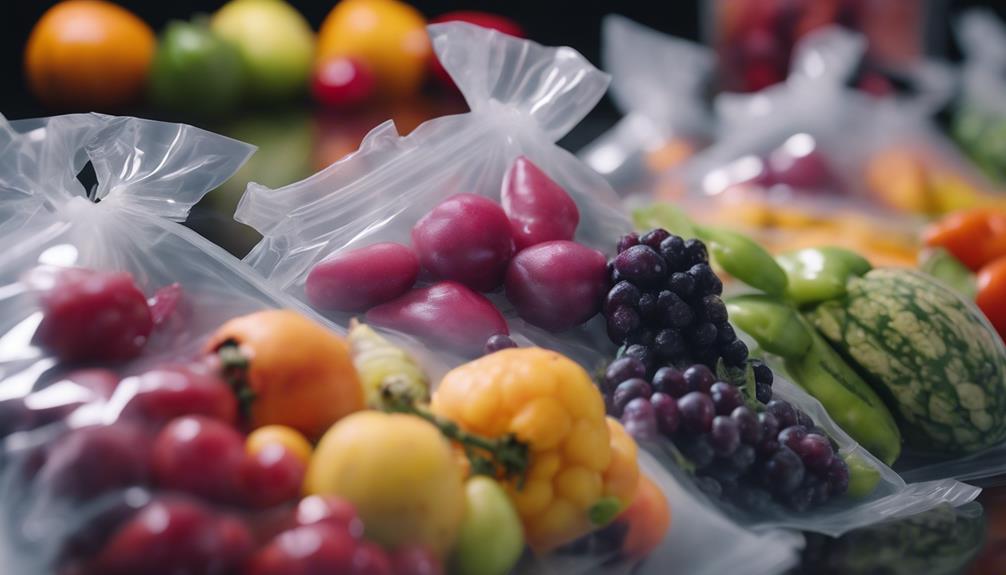
Introducing an array of new plant-based flavors and ingredients into vegan sous vide cooking enhances culinary innovation and elevates the versatility of texturized soy protein (TSP) analogues.
Exploring flavors in vegan sous vide opens up a world of possibilities. Unique combinations like smoked paprika, nutritional yeast, and tamari can bring depth and complexity to TSP dishes.
Innovative ingredients such as aquafaba, the viscous water left from cooking chickpeas, can be used to create meringues or mousses, expanding the dessert options in vegan sous vide cooking.
Promoting Sustainability Through Food
Exploring the sustainability benefits of vegan sous vide cooking reveals a pathway towards eco-conscious culinary practices that mitigate the environmental impact of traditional meat-based diets. Sustainable sourcing is a key aspect, as plant-based ingredients require fewer resources like water and land compared to animal products. By utilizing sous vide processing, chefs can exercise cooking precision, enhancing the texture and flavors of plant-based dishes, leading to a more enjoyable culinary experience. This method not only reduces food waste but also allows for flavor experimentation, creating innovative and delicious vegan meals.
In addition to the environmental advantages, plant-based sous vide dishes help conserve water resources and combat deforestation, contributing to a more sustainable food system. Embracing sustainable cooking methods like sous vide not only benefits the planet but also addresses ethical concerns, promoting a more compassionate world. Vegan sous vide cooking supports a healthier planet by offering creative and eco-friendly culinary solutions that cater to a growing audience seeking delicious and sustainable food options.
Frequently Asked Questions
What Is a Disadvantage of Sous Vide?
A drawback of sous vide is its slow, precise cooking process. It can lack the browning you get from traditional methods. While it produces tender food, achieving the same level of caramelization can be challenging.
Is Sous Vide Useful for Vegans?
Yes, sous vide is incredibly useful for vegans. It enhances flavor, improves texture, and preserves nutrients in plant-based dishes. With precise control over cooking, it empowers you to create meat-like textures in vegan meals.
What Are the Best Vegetables to Sous Vide?
When considering the best vegetables for sous vide, root vegetables like carrots and beets stand out for maintaining texture and flavor. Leafy greens, cruciferous veggies, mushrooms, bell peppers, and asparagus also excel in this cooking method, preserving nutrients and taste.
Is Sous Vide Worth It?
Sous vide techniques make plant-based cooking cost-effective by enhancing flavors and saving time. The precise temperature control and nutrient retention justify the investment, creating tender proteins and juicy veggies effortlessly. It's definitely worth it.
Conclusion
To sum up, the plant-based revolution is rapidly growing, with vegan sous vide cooking at the forefront of innovative culinary techniques. This movement not only offers environmental and ethical benefits but also promotes health and sustainability.
Despite challenges and misconceptions, the impact on the food industry is undeniable. As new flavors and ingredients continue to emerge, the future of plant-based innovation looks promising. Embracing this trend isn't just a choice, but a necessary step towards a more sustainable future.
